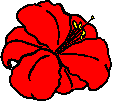 Shields
Gardens
Shields
Gardens
| Home |
| Daylilies |
| Rare Bulbs |
| Clivia |
| Seed Sales |
| E-Mail and Chat |
| Photo Gallery |
| Information |
| Sources |
| Guest Sites |
| Societies and Clubs |
| Links |
| People |
| About Us |
Plant nutrition is a complicated subject. Nutritional requirements of plants can be drastically affected by differences in composition of the growing medium. It will depend slightly on the kind of water supply you have -- what dissolved minerals does it already contain? The ambient temperatures in your growing area will affect the uptake and utilization of inorganic nutrients by the plants. It will depend even on the intensity of the light the plants are receiving.
That said, in general you have to provide the growing plant over the course of the year with the kinds and amounts of nutrients that are retained in the healthy plant tissues. I have not seen those numbers for Clivia (as far as I can remember, anyway) but for most monocots, from tulips and daffodils to daylilies, it amounts to N - P - K [nitrogen - phosphate - potassium] in ratios around 3 : 1 : 4 (as found, e.g., in 15 - 5 - 20 fertilizer). Soils with a significant clay content will bind ammonium (a useful form of nitrogen) and potassium reversibly by ion-exchange mechanisms (think of zeolite water softeners). Clay also binds phosphate, but much more tightly. Excessive bound phosphate can in turn sequester iron, making it unavailable to the plants. If you grow plants in clay containing media, you have to carefully limit the amount of phosphate in the fertilizers you give the plants. When we grow plants in media that are devoid of clay, excess phosphate can wash right on through the container. When that happens, it does not accumulate to where it interferes with iron uptake by the plants. Excess phosphate in the fertilizer is wasted, but it is also the cheapest component.
Soils containing lignins and other organic matter (e.g., decomposing peat) will have additional ion exchange capacity, and they can reversibly bind ammonium and potassium up to the limits of their capacities. Such reversibly bound nutrients are readily available to the plants as they are needed. Excess N and K (potassium) will be washed on through the medium and out the bottom of the container, posing no hazards to the growing plants.
Cheap fertilizers contain sodium salts as sources of phosphate and they contain potassium chloride (KCl) as the source of potassium. When the plant takes up the phosphate and the potassium, the residue is sodium plus chloride, or Sodium Chloride, common table and sea salt (NaCl). Excess accumulation of NaCl in the growth medium is deleterious to the plant. The sodium will also compete for ion exchange binding with ammonium and potassium, lowering the effective nutrient reservoir held in the growth medium. It does not pay to go cheap on fertilizers for growing valuable plants.
The secondary nutrients, like calcium, magnesium, sulfate, and iron, also have to be provided. Hard water usually contains calcium and often also some magnesium. Sulfate is often a component of fertilizers, where it occurs as ammonium sulfate or potassium sulfate. Use of high sulfate fertilizer can affect the pH of the growth medium. You need to pay attention to what form the sulfate is in and how much you are adding, in case the pH is modified inadvertently.
Good sources of calcium are calcium nitrate (soluble) and gypsum (calcium sulfate, slightly soluble). Magnesium is found along with calcium in dolomite limestones, from which both are very slowly released into the growth medium. Magnesium sulfate is also an excellent and soluble source of magnesium as well as of sulfate.
Iron is best added as a chelated or sequestered form; a common commercial preparation is "Sequestrene"™ and another is Iron EDTA. Adding iron sulfate will cause a strongly acidic reaction in the growth medium, lowering the pH. Excess iron sulfate can also bind phosphate irreversibly and deprive the plants of phosphate.
The trace elements or micronutrients include boron, copper, cobalt, iodide, manganese, molybdenum, selenium, vanadium, and zinc. The appropriate level is different for each individual micronutrient. Iodide, selenium, and vanadium are often omitted entirely. Adding micronutrients at levels above the ppm (part per million) to ppb (parts per billion) level can cause toxic reactions in the plants. They are best added using a commercial fertilizer specially formulated with the correct levels of trace elements.
When we grow plants in containers in soilless media, we are virtually growing them hydroponically. Every nutrient, from nitrogen and phosphate to vanadium and zinc, has to be provided. When it comes to growing Clivia, there is not much information in the scientific literature to specifically guide us. Here is where sharing experience is especially useful.
Jim Shields
For information about this account, contact:
James E. Shields, webmaster at <shieldsgardens@gmail.com>
10 February 2012
© Copyright 2012 by James E. Shields. All rights reserved.